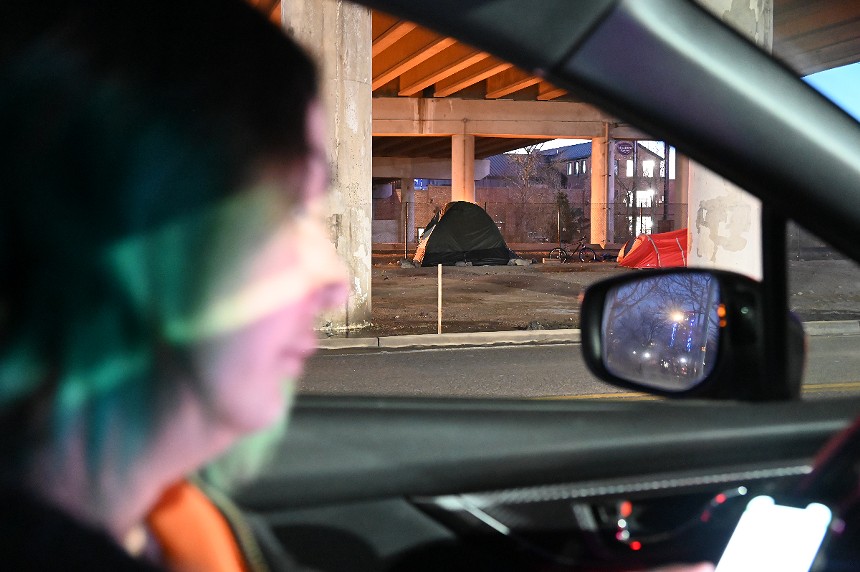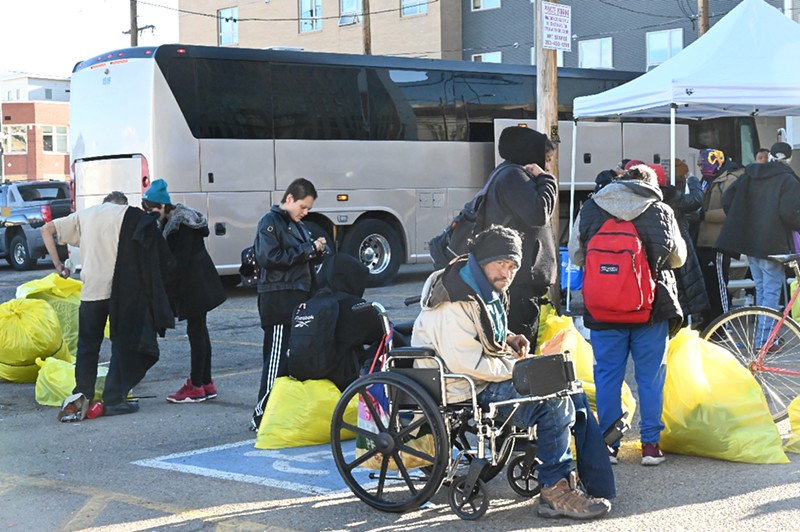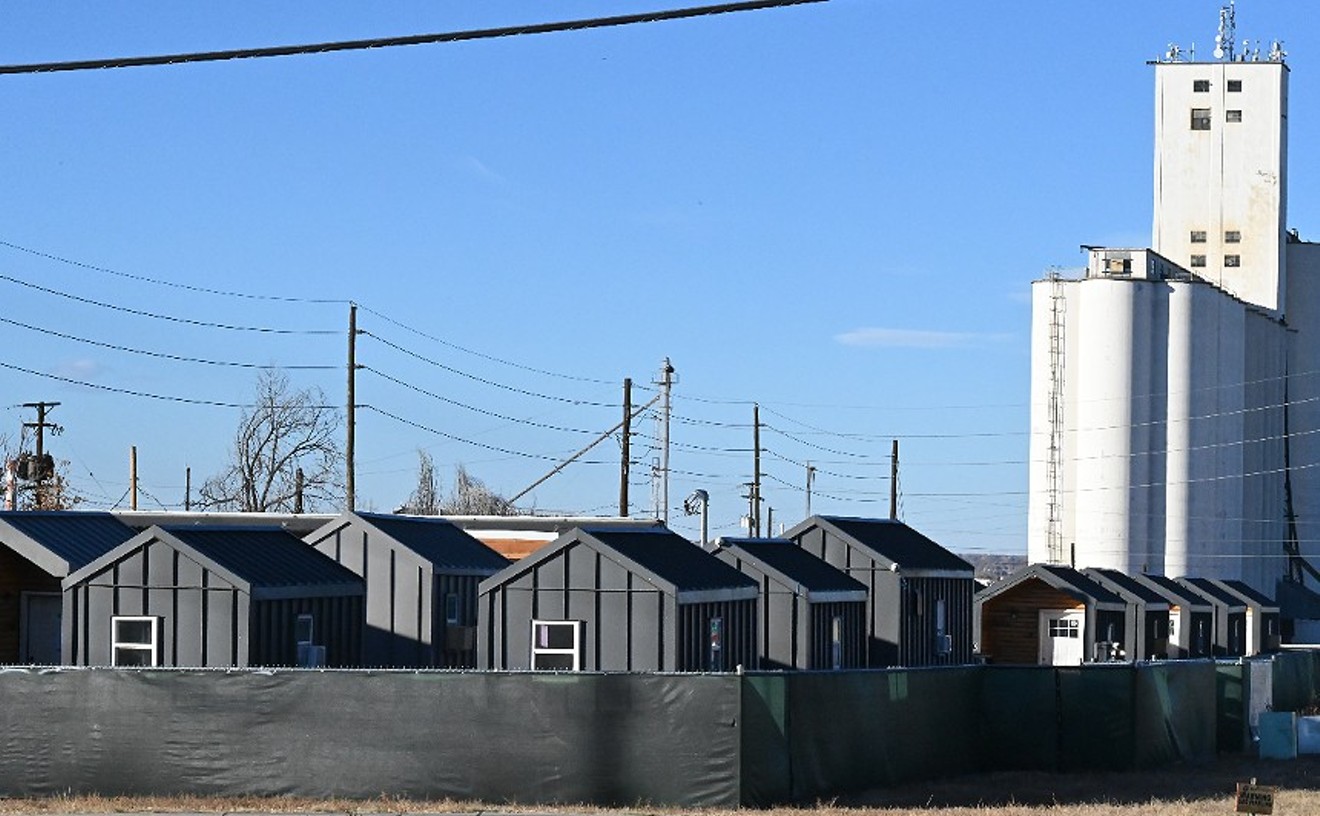"We have always believed that homelessness is a solvable problem, and now we have the data to prove it," Johnston says in a statement responding to the homeless study. "In just six months we were able to achieve transformational reduction in unsheltered homelessness. ... Denverites should be proud to live in a city that responds to homelessness with compassion."
The PIT Count is an annual tally of people who were in homeless shelters or sleeping on the streets on the night of January 22. As a condition of federal funding, county governments are required by the United States Department of Housing and Urban Development to conduct the count within their jurisdictions.
For the metro area, the 2024 PIT Count found that 9,977 people were living outside or in homeless shelters across Adams, Arapahoe, Boulder, Broomfield, Denver, Douglas and Jefferson counties. That was 912 more people than the 2023 count, a 10 percent increase. According to the latest count, the number of people living outside rose by about 6 percent, from 2,763 people in 2023 to 2,919 in 2024, while the number of people in homeless shelters rose by 12 percent, from 6,302 people in 2023 to 7,058 in 2024. The number of homeless families in the metro area has also grown from 2,101 to 3,136.
The 10 percent jump across the metro area was "driven primarily" by the increase at homeless shelters, according to an August 14 press release by the Metro Denver Homeless Initiative (MDHI), a nonprofit that coordinates homeless response services throughout the Denver area.
According to the report, the City of Denver experienced an 83 percent reduction in homeless families, a 23 percent drop in the number of people living in tents, cars and RVs, and a total drop in unsheltered homelessness — or the number sleeping outdoors — by about 160 individuals, or 11 percent. In 2023, Denver recorded 1,423 homeless residents sleeping outside.
"This is one of the largest year-over-year drops of any major U.S. city and Denver's largest single year reduction in unsheltered homelessness," according to a city press release. "Denver's reduction is in line with national leaders on homelessness like Houston, and ahead of peer cities like Seattle, Chicago, Washington D.C. and Atlanta."
MDHI noted that migrants, mostly from Venezuela, who were staying in Denver's city-operated shelters were not included in the PIT Count in order "to ensure access to the most accurate information of those experiencing homelessness." But the organization shared that Denver recorded 4,300 migrants in its shelters on January 22, the night of the PIT Count, and that 12,000 migrants arrived over a three-month span leading up to that night.
Nearly 43,000 migrants have come to Denver since December 2022, and about half of them are still thought to be in the metro area, according to the mayor's office. The city currently has eight migrants in its shelters, according to its migrant dashboard, and near the beginning of July, Denver recorded zero migrants in its shelters for the first time in nearly two years.
Nearly 43,000 migrants have come to Denver since December 2022, and about half of them are still thought to be in the metro area, according to the mayor's office. The city currently has eight migrants in its shelters, according to its migrant dashboard, and near the beginning of July, Denver recorded zero migrants in its shelters for the first time in nearly two years.

Sabrina Allie, an employee with the Department of Housing Stability, records a homeless resident living in a tent under an overpass in Sun Valley during the Point in Time count in January.
Bennito L. Kelty
The overall number of homeless residents in Denver County increased from 5,818 people in 2023 to 6,539 people in 2024, or a 12 percent increase. Every county, including Denver County, reported an increase in overall homelessness, but the mayor's office says it's proud of the dropping unsheltered population.
"If you think back to this time last year, there were large encampments all over the city. We have already come to a place where we don't have large encampments in the city of Denver anymore," Cole Chandler, the mayor's senior advisor on homelessness resolution, says. "That makes a positive impact on our neighborhoods, on our businesses, but most importantly, it makes a positive impact on the lives of individuals who have been forever changed."
Chandler says the increase in overall homelessness in Denver is "inflow" from "more and more people becoming homeless." The second year of Johnston's administration is focused on housing and affordability to shrink that inflow of homelessness, he notes.
"This is where our homelessness strategy and our housing strategy connect," he says.
At the same time, MDHI noted that across the metro area "fewer people are experiencing homelessness for the first time," while "the number of chronically homeless individuals rose by 16 percent."
Homeless services providers say the count is only a snapshot of how many homeless residents are in each county. According to the MDHI, the count can be influenced by weather, volunteer engagement and whether homeless residents chose to participate in the count.
Still, MDHI added that the actual number of homeless residents across the metro area could be three-times higher than the nearly 10,000 people marked as homeless by the PIT Count this year. "The Homelessness Management Information System (HMIS) used by over 100 nonprofit and government agencies allows us to see that this number is closer to 30,000 throughout the year," MDHI noted in a press release.
Johnston started his mayoral administration in July 2023 by announcing he would house 1,000 homeless residents in six months. He achieved that goal on the last day of the year by his own count, and moved people, mostly through sweeps, into hotels, micro-communities and ,in a few cases, into permanent housing, according to the mayor's office.
So far this year, Johnston rebranded his homelessness resolution campaign as All In Mile High and has moved another 600 people indoors. Since he took office, his administration has swept seventeen different encampments and moved nearly 1,700 people indoors.
So far this year, Johnston rebranded his homelessness resolution campaign as All In Mile High and has moved another 600 people indoors. Since he took office, his administration has swept seventeen different encampments and moved nearly 1,700 people indoors.
"We still have a homelessness challenge," Chandler says. "It's one that we're continuing to take head on and one we're getting better at addressing each and every day."













